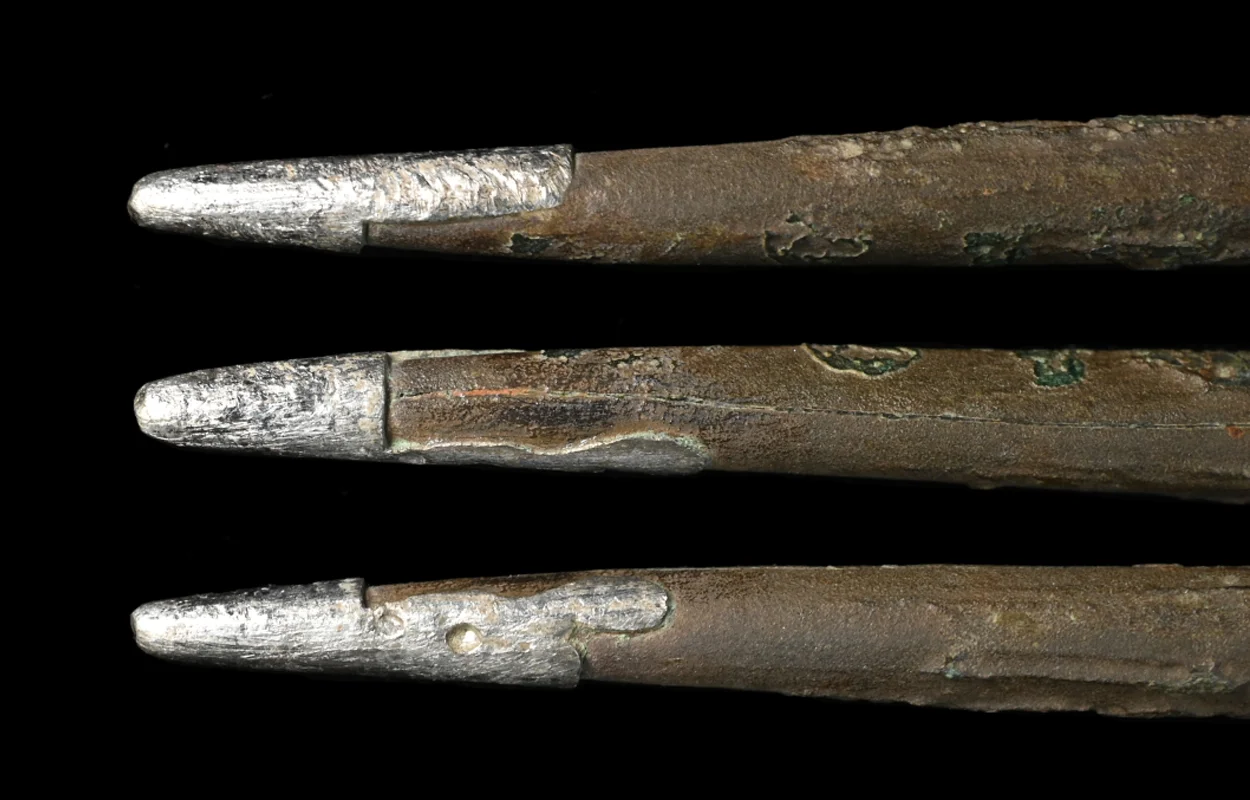Archaeologists from the Saxony-Anhalt State Office for Monument Preservation and Archaeology (LDA) have unearthed a rare silver-tipped stylus during excavations at the Himmelpforte Monastery, otherwise known as the “Gates of Heaven”.
Located between the Hasserode and Darlingerode in Germany’s Harz Mountains, the Himmelpforte was an Augustinian hermitage founded in 1253 by the lords of Hartesrode, before being destroyed during the Peasants’ War of 1525.
Since 2022, excavations at the Himmelpforte by LDA archaeologists have been uncovering monastic artefacts and everyday objects, providing new insights into medieval literacy and artistry, most notably, with the discovery of a rare copper/silver stylus.
The 11.1 cm stylus was unearthed in a refuse layer near the cloister’s east wing. A metallurgical study has determined that the object was made from a copper alloy shaft, tipped with silver that bears traces of sharpening and wear.
The study also revealed that the silver tip contained about five percent copper, slightly higher than modern sterling silver, and microscopic air bubbles indicating it had been applied while molten.
Silverpoint instruments like this one were used for writing and fine drawing on specially prepared parchment or paper. Before graphite pencils were introduced, artists such as Rogier van der Weyden, Albrecht Dürer, and Rembrandt relied on silverpoint for precise, permanent lines.
Unlike ink or graphite, silver produced delicate gray marks that darkened over time and could not be erased—a perfect medium for detailed sketches and manuscripts.
To write or draw with such a tool, the surface had to be coated with a fine abrasive, traditionally bone ash mixed with water, then polished smooth. The result was a medium prized for its clarity and permanence. Monastic scribes and Renaissance masters alike valued the silver stylus for its portability, precision, and resistance to smudging.
Together with book fittings, ordinary styluses, and even two surviving volumes from the Himmelpforte library, this silver pen reveals the monastery’s deep engagement with learning, literacy, and the arts before its demise in the 16th century.
The discovery is now featured in the exhibition “Monasteries. Plundered. In the Turmoil of the Peasants’ Revolts” at the State Museum of Prehistory in Halle (Saale).
Header Image Credit : LDA – Vera Keil
Sources : Saxony-Anhalt State Office for Monument Preservation and Archaeology (LDA)





